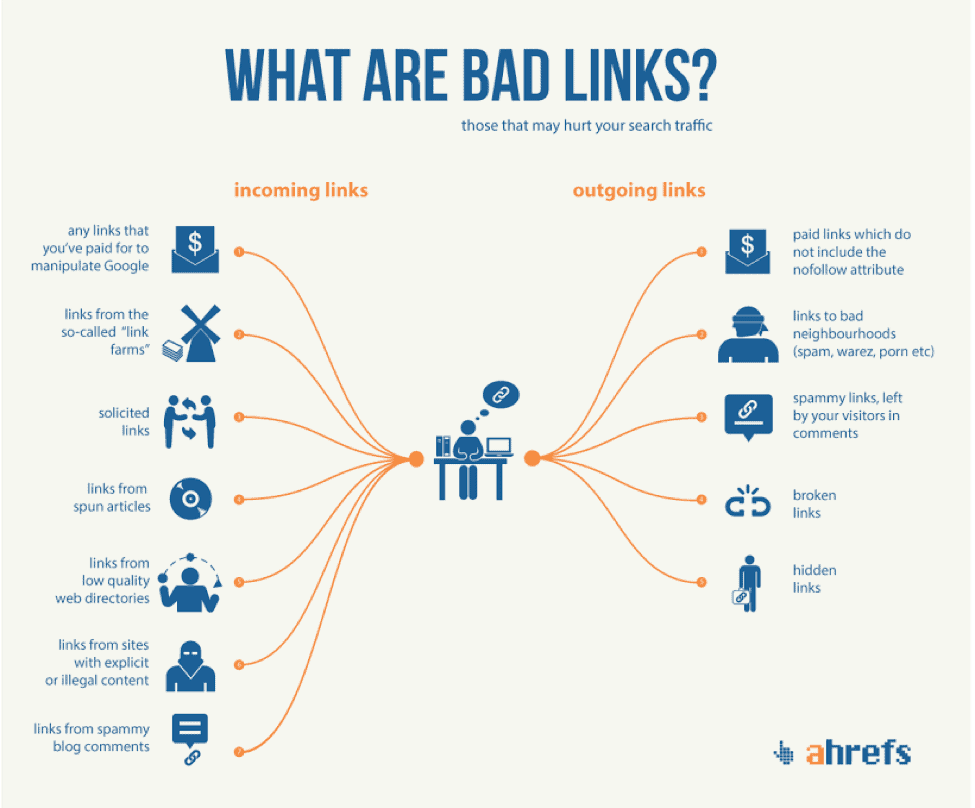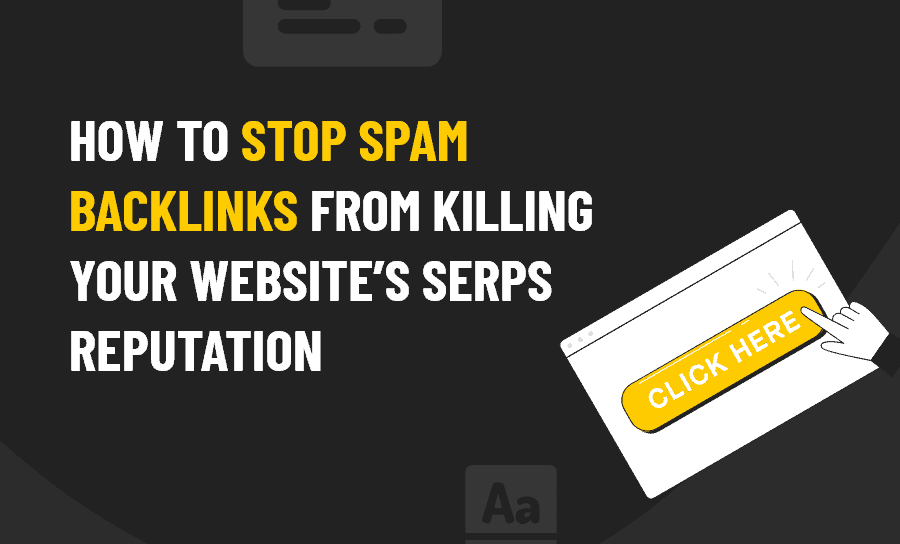To paraphrase a certain horror icon, let’s play a game.

When you think of the word Penguin, what image comes to mind. If you think cute, flightless waterfowl, waddling along adorably, then you are a normal human being. If you immediately conjure up visions of bad backlinks, spam and plummeting SERPs rankings then hello there fellow SEO junkie!
You don’t actually have to be an SEO expert to have heard of Google Penguin, mainly because it’s been around since 2012 now but still gets discussed a lot. Most people who have ever read anything about SEO vaguely know Penguin has something to do with links. But they are often not quite sure what.
What we often find, when talking to new and prospective SEO clients is that even if they can differentiate a penguin from Penguin, they can’t always avoid spam backlinks from harming their website. This is because people have become inclined to assume that any new backlink their site can pick up is a good one.
Unfortunately, this is not the case. This is why we want to talk to you today about bad backlinks, how your SERPS rankings can be damaged by them and what you can do to stop that from happening.
Why Should You Care About Spam Backlinks?
We already know what you’re thinking. Backlinking is important. So every time our website gets a new backlink, it’s something to be happy about. It’s another small step towards a better position in the SERPs. So great, a new backlink. Let’s get even more; backlinks are just what we need.
Here’s the problem with that thinking. There are backlinks that are so good they can indeed do more than just nudge your SERPs rankings a tiny bit they can boost it by quite a lot. There are some that nudge it up a little.
And then there are backlinks that are so nasty, so spammy that they can undo all the hard work you’ve put into a backlinking campaign and send your SERPs rankings plummeting (or worse) Worse? Mmm-hmm. Worse as in a manual Google penalty or even your site being delisted from the SERPs.

In the darker, murkier, depths of SEO (here we go with the horror tropes again), there lurks a thing called a spam backlink. It’s a link to your page that’s housed on poor quality, irrelevant website, often using bad anchor text.
These links don’t sound like they would be good for any website do they? And they aren’t, which is Google’s thinking too.
These spam backlinks can come from anywhere, but they usually come from those cheap Fivver gigs, shady link networks and Scrapebox comment spam. And often we find that even our most ‘respectable’ clients have at least some of these hiding in their link profile when we run it.
A Quick Spam Backlinks History Lesson
Wait, did we say that even websites trying to be good, respectable websites that would never dream of heading into blackhat SEO land might be harboring some of these spam backlinks? We did, and that’s because SEO moves fast and, once upon a time what is now considered a spam backlink was (kind of) OK.
From the very early days of SEO, people knew that this ‘Google’ search engine thing used the backlinks to websites as a strong indicator of quality. So webmasters and the early SEOs rushed around trying to gain as many of them as possible, as fast as they could.
People who are going crazy, placing links on every forum they could find, in dozens of blog comments a day, on all kinds of weird little directories, and even making use of tactics to add links to really ‘respectable sites’ (.edu sites etc.) without those site owners even knowing about it. IN other words, link building got shady, and more than a little bit silly.
This really upset Google. So in 2012, they unleashed THE PENGUIN. And its mission was to search out these spam backlinks and punish the sites that were housing them. Those SEOs who remember the bloodbath that was the first Google Penguin rollout still cringe when you mention it (and some twitch a bit too) It was bad.
In 2020 Penguin has long been a full-time element of the Google Search algorithm. It goes after, on a minute by minute what Google themselves describe as “any links intended to manipulate PageRank or a site’s ranking in Google search results may be considered part of a link scheme and a violation of Google’s Webmaster Guidelines.”
Sensible people (SEOs) learned their lesson years ago, and only follow a backlinking procedure that keeps this harsh Google edict in mind. However, some less scrupulous SEOs – let’s call them grey hatters – know that, until Google catches them, which may take weeks or even months – spam backlinks can boost a website’s SERPs position rather nicely.
By the time they do though, these grey hatters are long gone, leaving the webmaster to wonder why, after such a nice bump their rankings have tanked.
But, as you don’t do any shady stuff (because that would be silly), or employ and shady SEOs, you don’t have anything to worry about right?
Maybe.
When was the last time you checked your backlink profile? Sins of past SEO efforts may still be there haunting you. What someone did five years ago, when it might have been OK could really be hurting you now.
And then there’s another monster that may be lurking: negative SEO.
Negative SEO? What??
Ah. Negative SEO. It really is a thing. It’s what people – and a lot of the time people = competitors, but not always – do to try and harm your SERPs rankings. It’s mean and nasty, but it happens (especially if your site’s been doing well.) Most of the time you’ll never find out who ‘people’ actually are (were), you just have to defend yourself as best you can.

While there are a number of ways to conduct an effective negative SEO campaign (sounds terrible but it’s true) up to and including making false complaints and negative reports to Google, one of the most commonly used tactics is to point a lot of spam links at the target domain.
What Will Happen If I Have Spam Backlinks??

First of all, to quote Douglas Adams at his most practical: DON’T PANIC.
If you are genuinely not involved in a link manipulation scheme, Google will not delist your website over a few spam backlinks, and if there are more than a few, then you do need to act faster.
The process of getting ‘rid’ of spam backlinks, on the face of it, sounds pretty simple. To do so is a basic three-step process:
1. Detect all the spam backlinks your website has;
2. Compile a list of all the toxic domains (in .txt format);
3. Disavow association with them using the Google Disavow Tool
Now, as yes, it’s a bit more complicated than that, let’s break the process down step by step.
Finding Spam Backlinks on Your Website
In theory, the best possible way to find spam backlinks would be to go through every link to your site, one by one, to weed out the bad stuff. But there are more than a few problems with that. First is that it takes a lot of time, as even smaller sites tend to accumulate more backlinks than their owners were aware they had.
Second, how are you going to know what’s a good backlink and a bad one? As hard as it can be to get really good backlinks no one wants to ‘get rid’ of one accidentally. That’s where a good SEO tool comes in.
Tools like Ahrefs, SEMrush, Moz, or Majestic are all handy for executing a regular checkup on your website’s health. At Pearl Lemon, we happen to make use of all these tools to run in-depth link health profiles for our clients every month.
We would, however, would agree that for some small they are rather expensive extras, but if you want to get a very basic overview of your backlinks, and the bad ones, and then go ahead and do the rest manually then even the free versions of these tools can help.
These tools are particularly helpful because they make use a website grading system that takes a lot of the guesswork out of determining the quality of a backlink. Moz uses Domain Authority, SEMrush has its Domain Score, and in Ahrefs, it’s called Domain Rating.
We’ve found they are all fairly similar, although SEMrush does have a beta feature available (to subscribers) known as the Backlink Audit Tool that predicts you if your domain is at risk of being penalized. It’s not quite as precise as a manual link by link audit, but it’s very close.
Whichever tool you choose to use the goal is to find those spam backlinks. Many people are surprised the first time they run a backlink audit. Often clients tell us that they have never made an effort to obtain backlinks, and yet we find plenty.
Some are great, which is brilliant news, but far too often most of them turn out to be poor quality, spam backlinks that were either placed by an SEO they hired years ago or have been placed by persons/for reasons unknown.
Once you have a list of backlinks in any of this software, they will be scored, and you can begin to make a determination about which backlinks you want to keep. Some software, including all those mentioned here, even help you compile the disavow list so that all that remains to be done is for you to download it.
Actually distancing yourself – and your website – from these spam links is something that you’ll need to do yourself, via your Google Webmasters dashboard. The good news is that this process is fairly straightforward. Note though; you’ll never get a message from Google telling you what they thought of your list, you’ll simply have to run another backlink check in a few weeks to determine if the bad links have been removed.
Preventing Bad Backlinks
So how do you prevent bad backlinks from being associated with your website in the first place? Some precautions are easy to take. Don’t ever buy links, and be careful where you agree to have backlinks placed. As sites improve their placement in the SERPs, others take notice of this, and they will contact you asking for a link and offering one in return.
This is where you need to proceed with extreme caution. Check out the website – including its Domain Score – and determine whether 1) it makes sense and 2) if the site is a reputable one. Only if this is the case should you proceed.
As for preventing spam backlinks placed as part of a negative SEO campaign, there is, sadly, no super shield that can keep them at bay. However, a regular link audit – along perhaps with the implementation of a link monitoring tool like Linkody and other Monitor Backlinks will help you catch any spam backlinks placed by others fast so you can deal with them right away.
Final Word
Spam backlinks are sometimes more annoying than they are harmful, but the possibility that they could seriously damage – even destroy -your website’s reputation in Google. is very real. So you should never take that risk.
Decided – starting today – that you will make checking your website’s backlink profile a regular habit. Invest in a good SEO toolset to further keep your website safe and healthy. Or better still, hire someone to do it for you, with their set of tools.
And by the way, there is one more benefit of monitoring backlinks. Not only can doing so save your website from spam overload but also it is also an excellent way to find new content ideas – especially if you monitor your competitor’s backlinks as well – and outreach opportunities that may garner you those really great backlinks your website will benefit from.








